Italy regional guide: From Sicily to Trentino, 20 regions to stimulate your vacation shopping
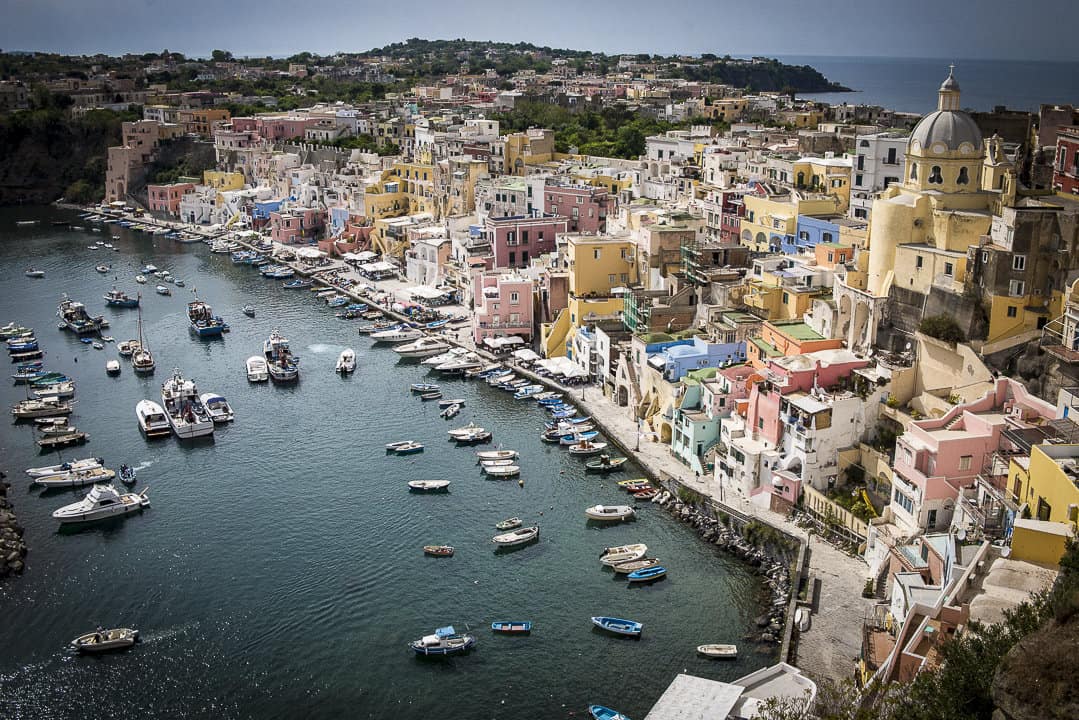
(The first of two parts.)
People who think Italy dates back to Ancient Rome don’t realize that the United States is nearly 100 years older than Italy. My adopted country wasn’t unified until 1861. Until then it was a series of city states with their own culture, traditions, dialect, cuisine and history.
It has been 162 years since Vittorio Emanuele II was declared king of a united Italy, and those regional differences still exist. Those lines on the map may as well be national borders. The differences are that stark.
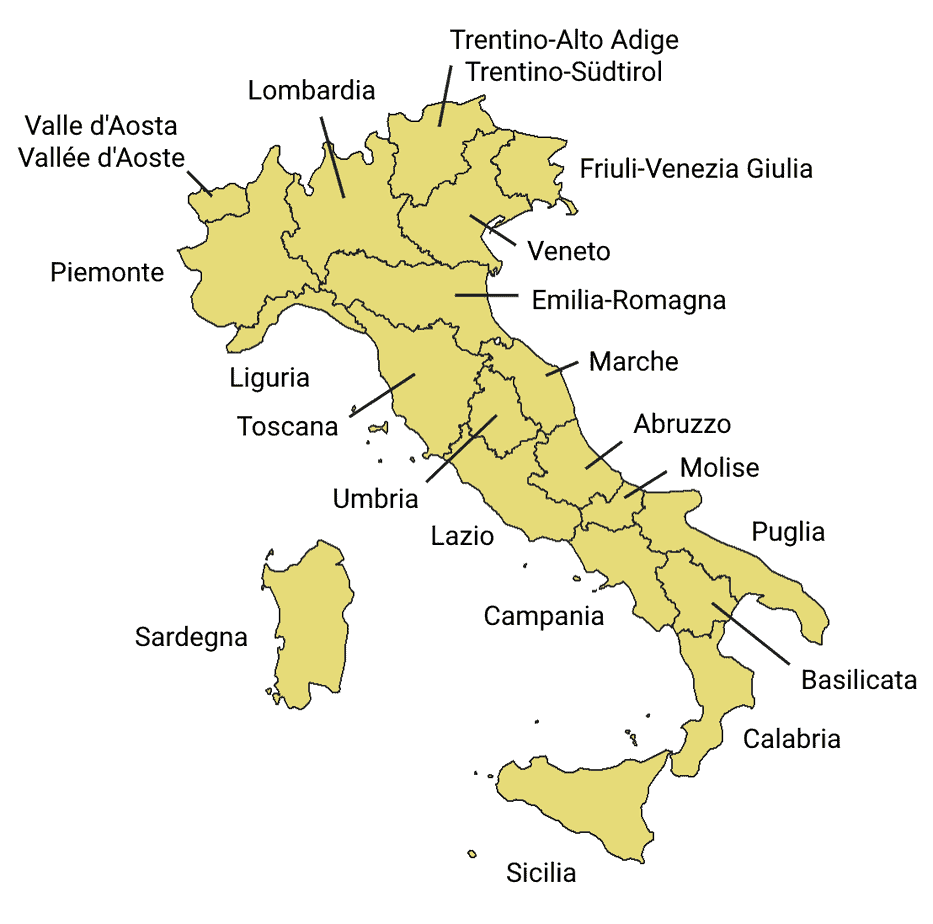
It makes Italy that much more exotic. It’s like its own continent. But where to go and what to do? That’s where I come in. Last month I spent a week in Calabria. It’s my 19th of Italy’s 20 regions. Before I make a clean sweep with tiny Val d’Aosta, I thought I’d write a regional guide for those visiting Italy this year.
We’re expecting a record number of tourists this summer. Don’t be afraid to slip off the beaten path. Calabria is a good idea. But there are others. So while you comb websites for your dream Italian vacation, here are thumbnail sketches of all 20 Italian regions, in alphabetical order. (Psst! I cheated and researched Val d’Aosta. All the others I visited.)
This is the first 10 with the other 10 coming next Tuesday.

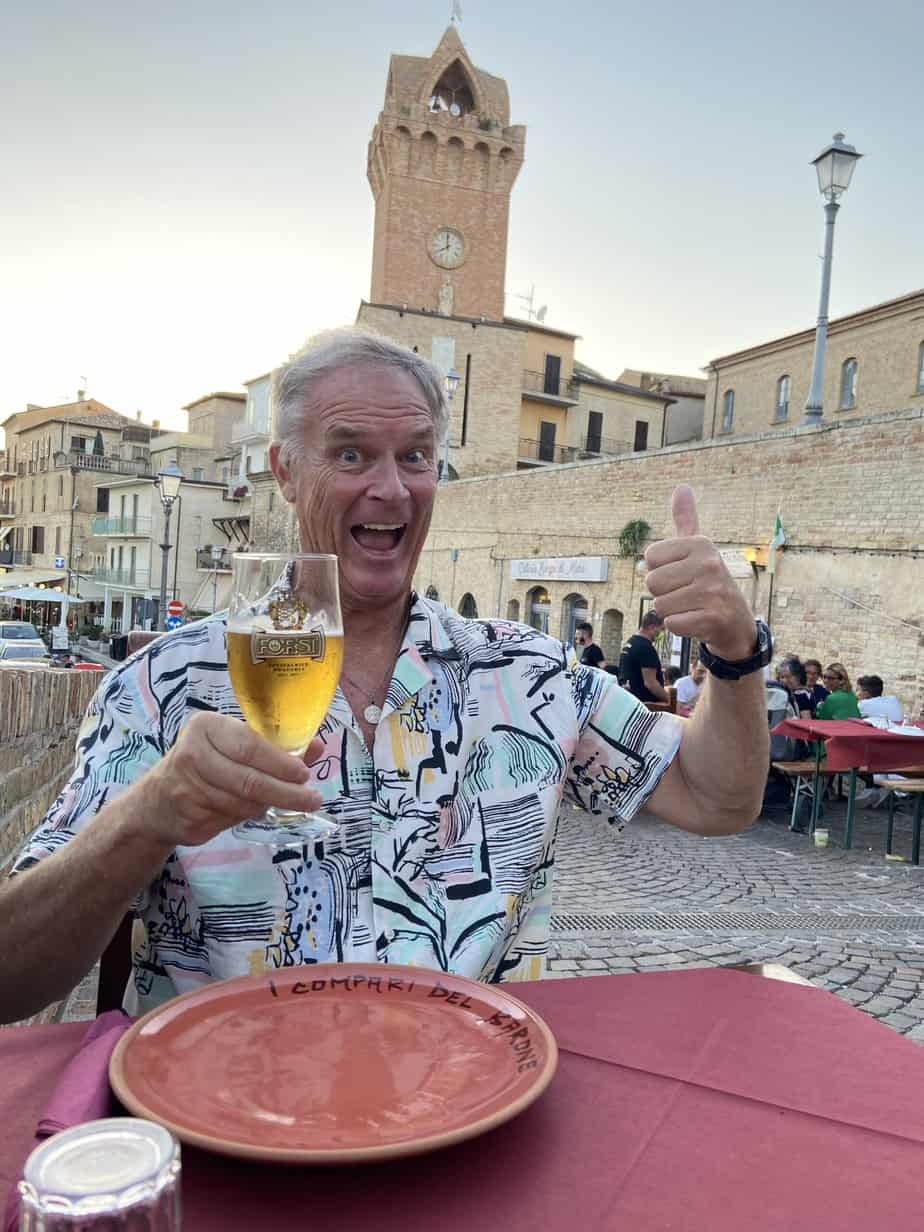
Abruzzo (pop. 1.3 million)
One of Italy’s least-explored and underappreciated regions, Abruzzo features the Apennine mountains down its spine. It has some of Italy’s best hiking in the Parco Nazionale del Gran Sasso and quaint, unspoiled mountain villages. It also has a small coastline with sandy beaches few foreigners ever see.
Biggest town: Pescara (pop. 120,000). It has a heavily developed beach area and the rebuild after heavy bombing leveled it during World War II left it with little charm.
Best town: Tortoreto (pop. 11,600). Skip Pescara and come here. It consists of Tortoreto Lido, with a sandy beach and is on the route of an 80-mile bike path lined with palm trees, and Tortoreto Alto, 785 feet above with great views of the sea.
Best site: Parco Nazionale del Gran Sasso. This 350,000-acre (142,000-hectare) park is one of Italy’s largest and lined with rifugi (mountain huts) for overnight trekking.
Most famous dish: Arrosticini. Grilled sheep bits skewered on wooden sticks served in a clay pot.
Most famous wine: Montepulciano d’Abruzzo. Rome’s most popular table wine.
Most famous citizen: Ovid (Sulmona, 43 B.C.-17 A.D.) One of three top poets in Latin literature on par with Virgil and Horace.
Basilicata (pop. 562,000)

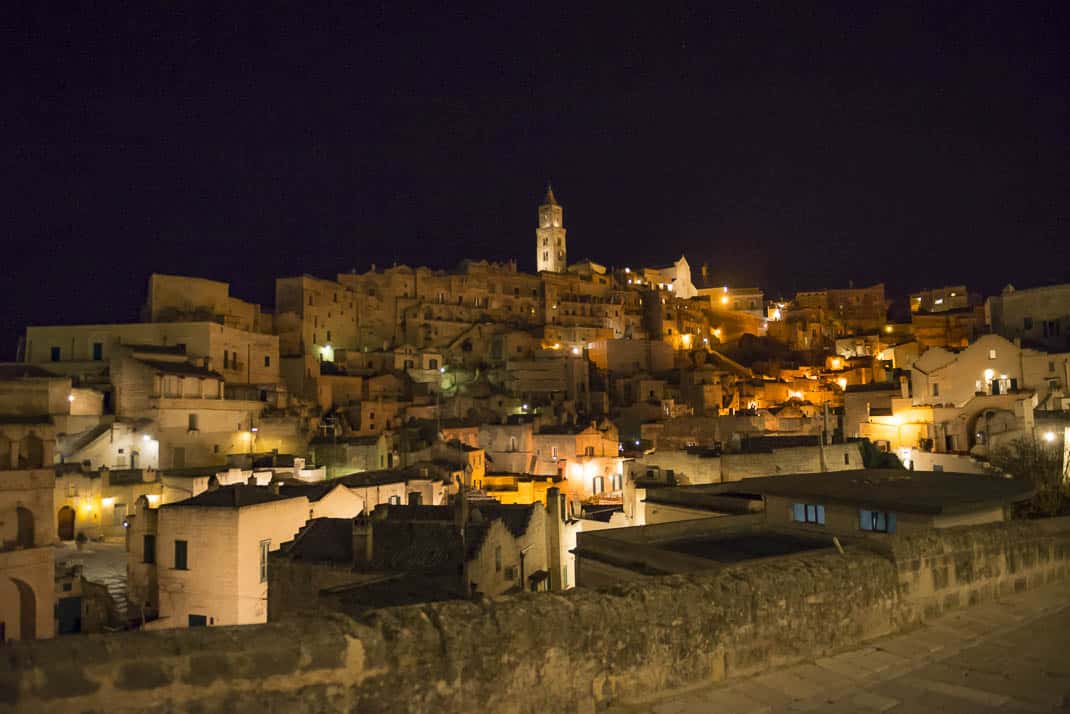
This is Italy’s back of beyond. Squeezed between Puglia and Calabria, Basilicata is the sole of Italy’s boot. It isn’t easy to reach but offers a surprising variety, from the southern reaches of the Apennine mountains to the forests of Parco Nazionale del Pollino to the delightful seaside town of Maratea.
Biggest town: Potenza (pop. 67,000). It has little international tourism despite being Italy’s highest regional capital at 2,687 feet (819 meters) and built vertically in the foothills of the Apennines.
Best town: Matera (pop. 60,000). The Europe Culture Capital for 2019 and a UNESCO World Heritage Site claims to be the world’s third-oldest city at 9,000 years. It looks it. The stone caves, called sassi, are still used for housing and portrayed ancient lands in films for years.
Best site: Sassi. Matera’s original dwellings were rife with malaria after World War II and residents were moved into Matera’s new town in 1965. Residents were allowed back in 1986 if they renovated them with their own money. Today a stroll is a step back through many millennia.
Most famous food: Cialledda. A stew made from stale bread soaked and kneaded with tomatoes, vegetables, onions, olive oil and oregano.
Most famous wine: Aglianico del Vulture. Basilicata’s only DOCG (top quality verified) wine comes from the volcanic soil of Mount Vulture and considered one of the best wines in Italy.
Most famous citizen: Horace (Venosa, 65 B.C.-8 B.C.). Ranked among the greatest poets in Italian history and the leading poet in the time of Caesar Augustus.
Calabria (pop. 1.9 million)
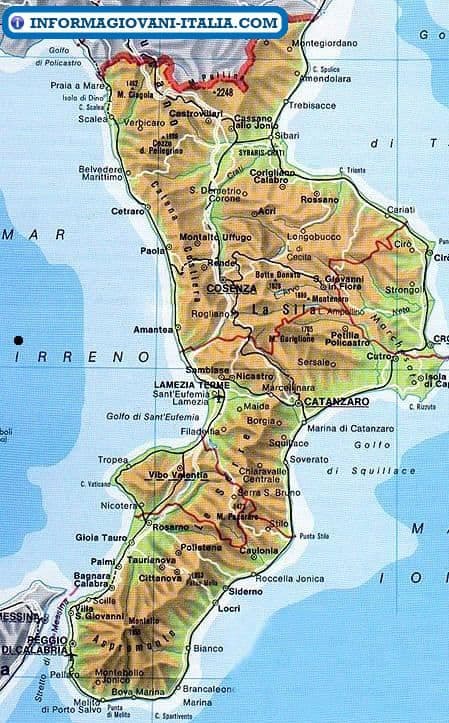
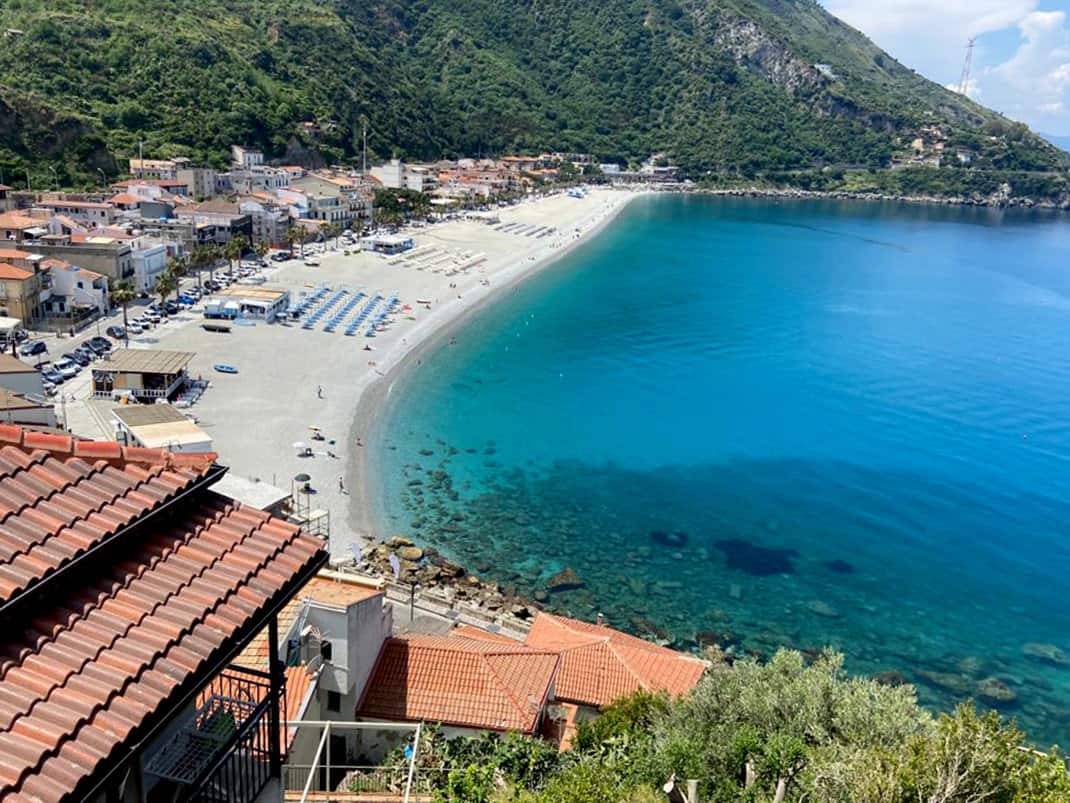
Considered Italy’s poorest, least developed and most rural region, Calabria is the toe of Italy’s boot. It’s also known for its sandy beaches along the Tyrrhenian and Ionian seas and the ‘Ndrangheta, the most powerful crime syndicate in Italy. The rural roads are bad but three national parks reward leisurely drives.
Biggest city: Reggio Calabria (pop. 183,000). At the tip of the toe, it’s the main overland jump off point to Sicily. Its national museum, dating back to Neolithic times and including crown jewels from Ancient Greece, is worth the trip alone.
Best city: Scilla (pop. 5,000). Tropea is Calabria’s most famous destination but Scilla is quieter with a great beach and lovely harbor where you eat over the water and stare out at Sicily.
Best site: Santa Maria dell’Isola. Sitting on what once was an island, Tropea’s landmark was a medieval monastery and today provides the iconic photo op when it’s lit at night.
Most famous food: ‘Nduja. Calabrian sausage made from meat cuts, fat and Calabrian chili peppers.
Most famous wine: Gaglioppo. Only 4 percent of Calabrian wine is DOC, the second-highest quality label, and 95 percent is Gaglioppo. The red wine is OK. Try Ciro’, a crisp white wine, instead.
Most famous citizen: Gianni Versace (Reggio Calabria, 1946-97). Fashion designer founded Versace international fashion house in 1978.
Campania (pop. 5.8 million)
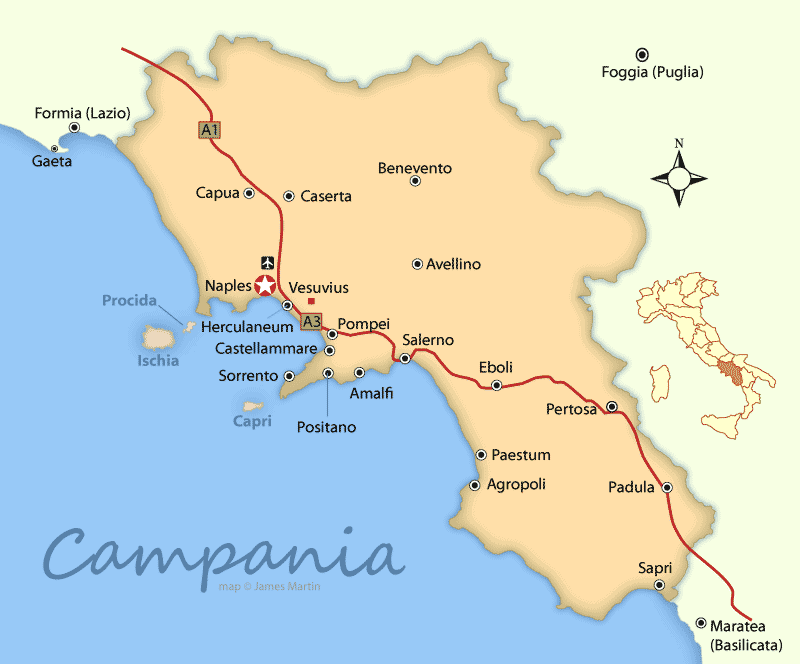
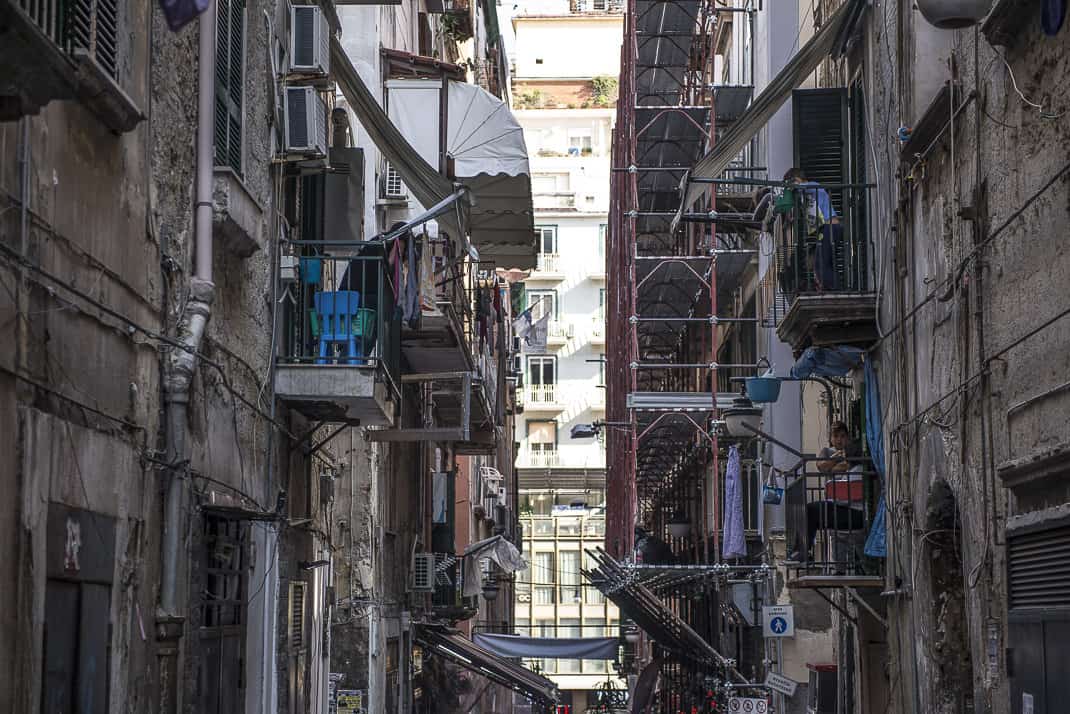
Campania’s Amalfi Coast is the Italy of people’s dreams with its pastel buildings hugging cliffs leading into the Tyrrhenian Sea. Naples is the birthplace of pizza, the world’s most favorite food. The region’s islands have been the destination of jet setters and nature lovers for centuries. What’s not to like?
Biggest city: Naples (3 million). Hot, crowded and chaotic, Naples still charms you with its raw emotion and hospitality. It has a violent history but its reputation as a violent city is overrated. Its port looks a bit tired but sitting high above looking at the Bay of Naples remains an iconic shot of Italy. And do you like pizza?
Best city: Procida (pop. 10,500). This island is my favorite place in Italy outside Rome. Located a 30-minute hydroplane ride from Naples, its harbor may be the prettiest in Italy. Time stays still in Procida. The Oscar-nominated film “Il Postino” was filmed here in 1994 because it looks the same as it did when the film was set in 1950.
Best site: Pompeii. Yes, it’s crowded. Yes, it’s a tourist trap. There’s a reason. Mt. Vesuvius’ eruption in 79 A.D. buried the city but preserved so much of it. Walking through the ruins one gets a sense of the opulence that lured so many of the Ancient Roman aristocracy to their pleasure palaces – and to their death.
Most famous food: Pizza. Modern pizza was invented in Naples in the 16th century with the help of the Spanish who introduced tomatoes from South America. In Naples, go to Da Michele which opened in 1870 and is considered the first pizzeria in Italy if not the best.
Most famous wine: Aglianico. A deep, dark purple grape, it’s considered one of Italy’s best varietals along with Sangiovese and Nebbiolo.
Most famous citizen: Sophia Loren (Pozzuoli, 1934-). Born in Rome, she moved to Pozzuoli, west of Naples, when she was 4. The iconic star of Italian cinema, she was listed 21st on the American Film Institute’s list of 50 greatest stars of American film.
Emilia-Romagna (pop. 4.5 million)
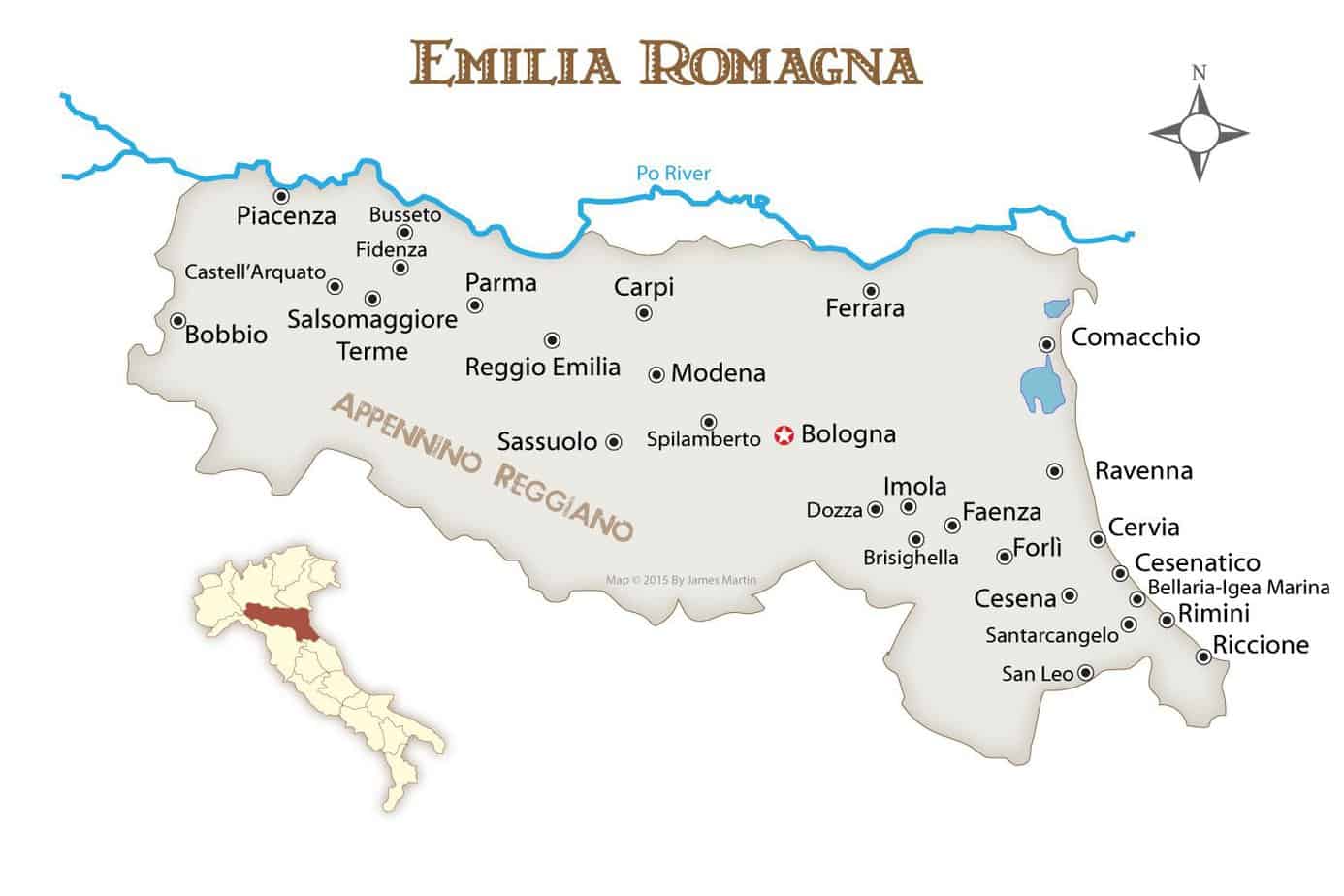
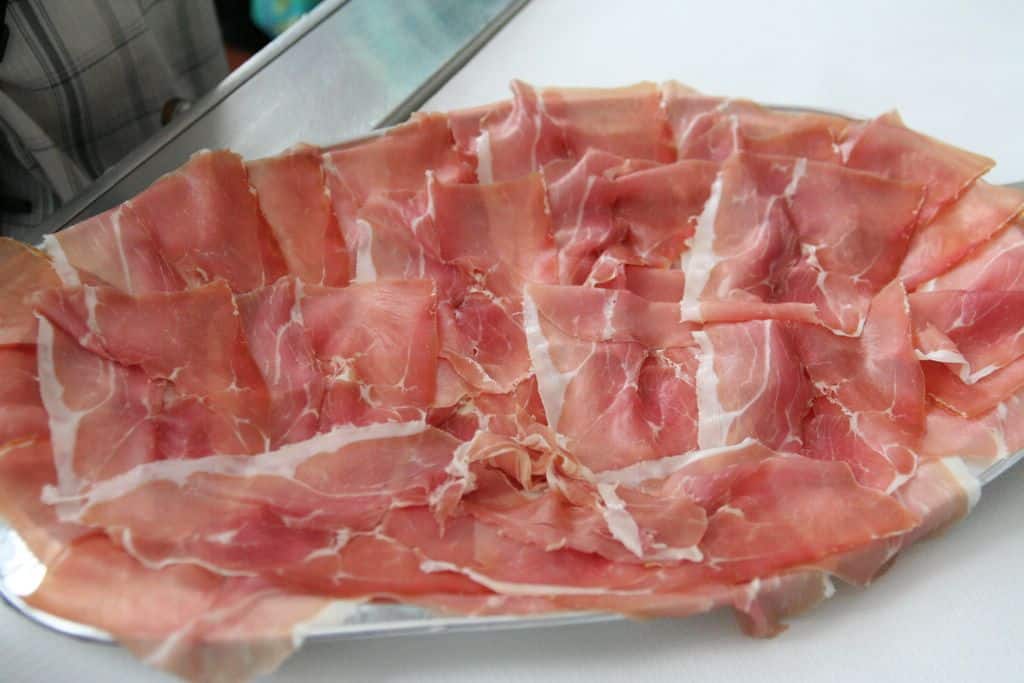
The land of comfort food (spaghetti bolognese) and fast cars (Ferrari), Emilia-Romagna gets overshadowed by Tuscany to the south. But the region has so much to see and do, from the iconic university town of Bologna to long sandy beaches near Rimini. And start every meal with Emilia-Romagna’s world famous antipasti.
Biggest city: Bologna (pop. 390,000). Home of the world’s oldest university (University of Bologna, 1088), Bologna maintains its educated, liberal bent. Its medieval colonnades make it wonderfully walkable and one of the most underrated cities in Italy.
Best city: Parma (pop. 194,000). Come here to eat as it’s the home of Parma ham and parmesan cheese, all served on antipasti trays. It also has a beautiful Duomo, art-nouveau cafes, a thriving opera scene and a center with little traffic.
Best site: Ferrari Museum. Located 25 miles west of Bologna in Maranello, it details the history of the classic sports car founded in 1939 by Enzo Ferrari of Modena. It has a museum and factory tour and you can test your skills at the pit stop experience. It was recently expanded to include Formula 1.
Most famous food: Spaghetti Bolognese. Known in Italy as ragu, its birth in Bologna dates back to the 18th century. The slowly cooked meat sauce remains the standard of Italian restaurants worldwide.
Most famous wine: Lambrusco. The grape of the sparkling red wine has been cultivated since the Etruscans picked them more than 2,000 years ago.
Most famous citizen: Benito Mussolini (Predappio, 1883-1945). He went from socialist to fascist and served as Italy’s dictator from 1922-43. Made the curious career move of befriending Adolf Hitler.
Friuli Venezia Giulia (pop. 1.2 million)
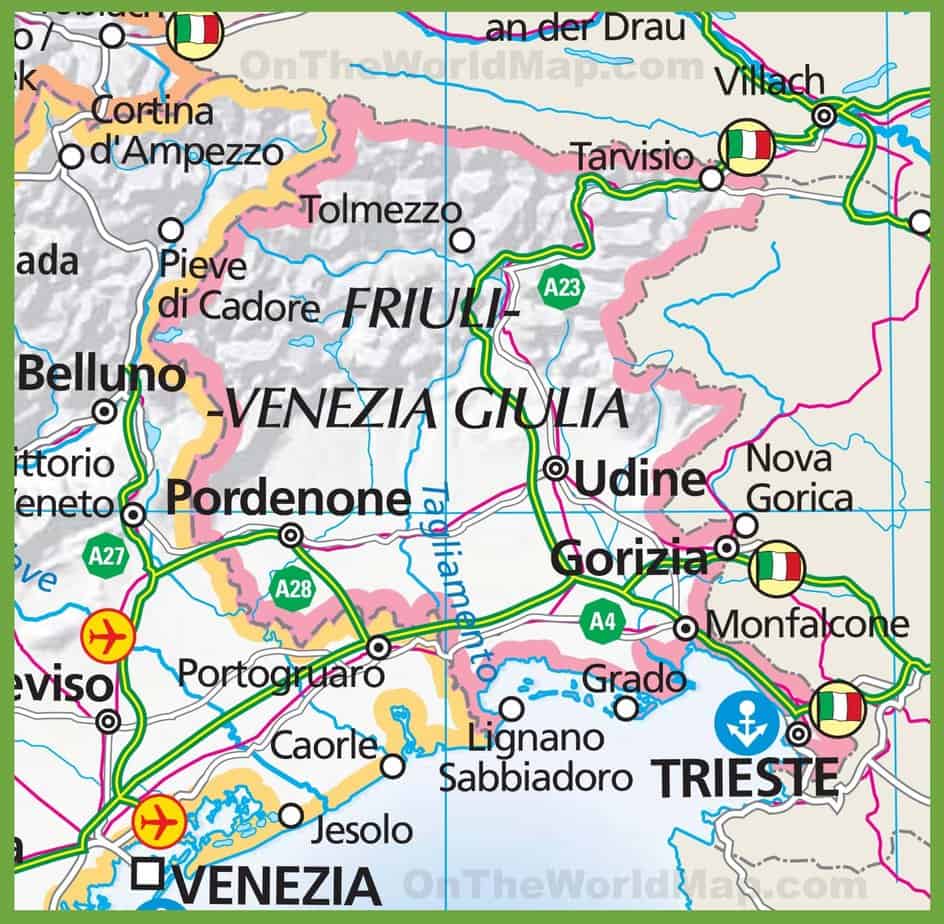
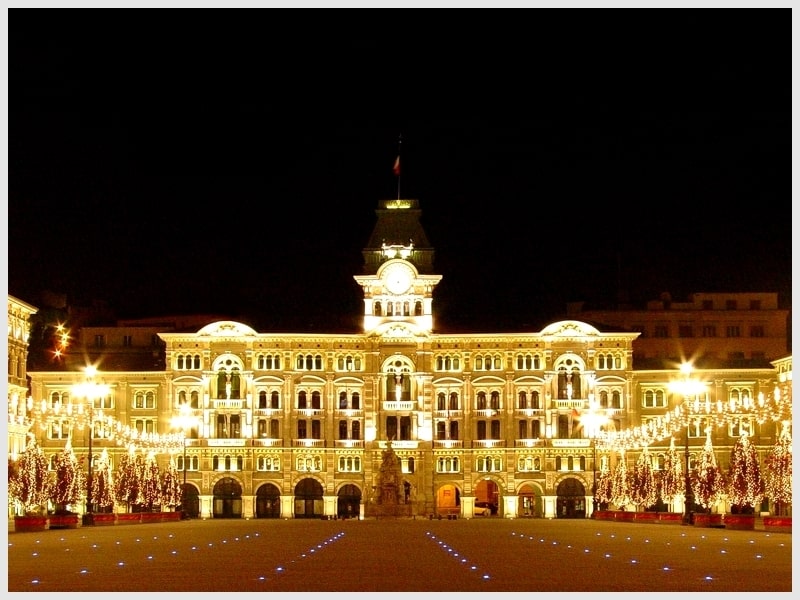
Occupying Italy’s northeast corner squeezed by Austria to the north and Slovenia to the east, Friuli Venezia Giulia offers a variety of cultures. The north will remind you of Germany then you pass through the vineyard-covered hills before descending to the refreshing lagoons. It’s another lightly trodden region.
Biggest city: Trieste (pop. 204,000). Once home of James Joyce, it still has a literary air about it. It’s home to Italy’s largest seaside piazza and covered in neoclassical architecture. Tucked in the corner squeezed between the Adriatic and Slovenia, it’s considered Italy’s most multicultural city.
Best city: Trieste. With a small edge over Udine, the region’s gastro capital, Trieste gets points for its leisurely pace. Piazza dell’Unita d’Italia, though too large to have true charm, is nonetheless a good place to kick back with a glass of the region’s excellent wine. And if you don’t loathe Joyce as I do, check out the Joyce Museum.
Best site: Basilica di Santa Maria Assunta. Located in Aquileia on the southern end of the region, the 14th century church has one of the top Roman-era mosaics in the world. A 760-square-meter glass walkway covers it all.
Most famous food: Montasio. The DOP alpine cheese from cow’s milk is aged up to 18 months and is the base for a famous regional dish, frico, a cheese, onion and potato pancake.
Most famous wine: Friulano. Grown and produced in the hills near Udine, it’s a crisp white wine often mistaken for Sauvignon Blanc.
Most famous citizen: Dino Zoff (Mariano del Friula, 1942-). Probably Italy’s greatest goalkeeper, the only Italian player to win a European Championship (1968) and a World Cup (1982). He also won six national Serie A titles with Juventus.
Lazio (pop. 5.9 million)
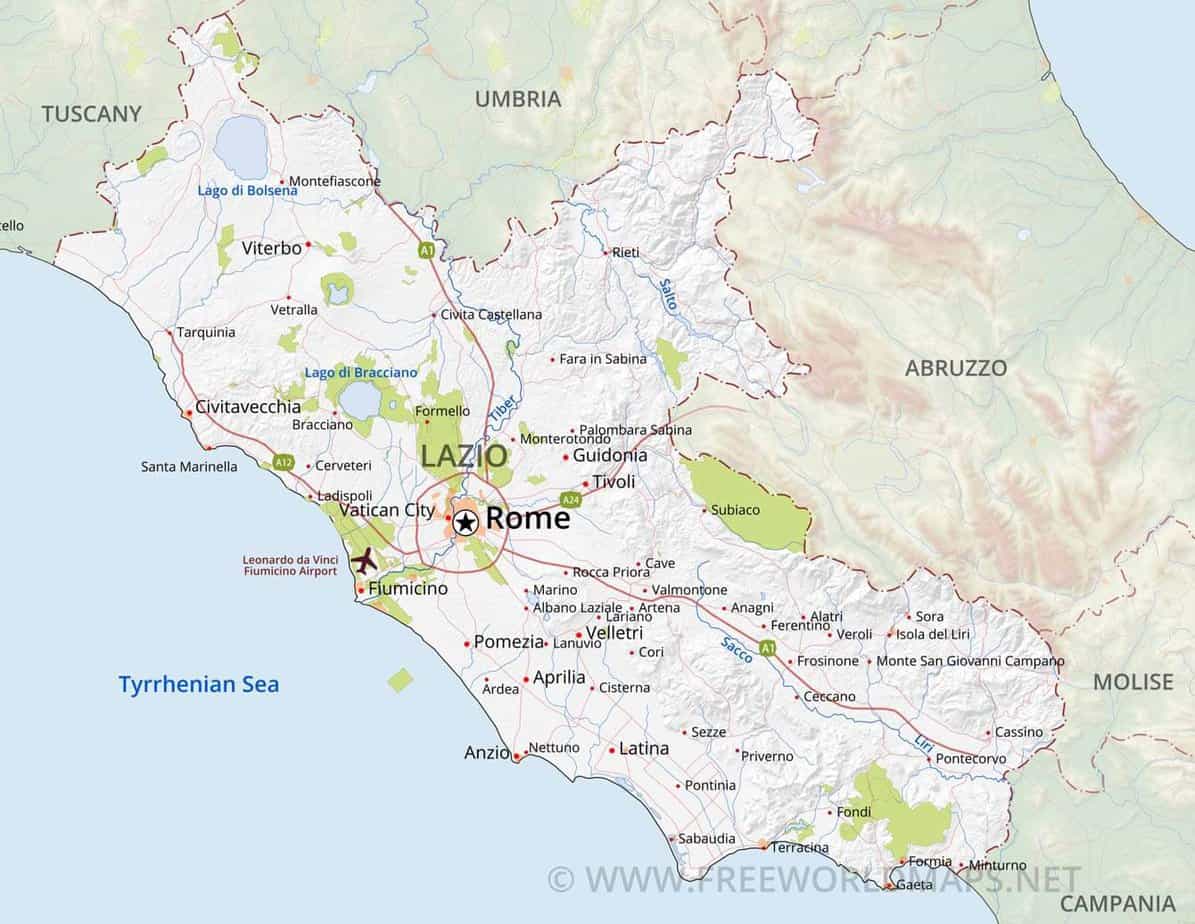
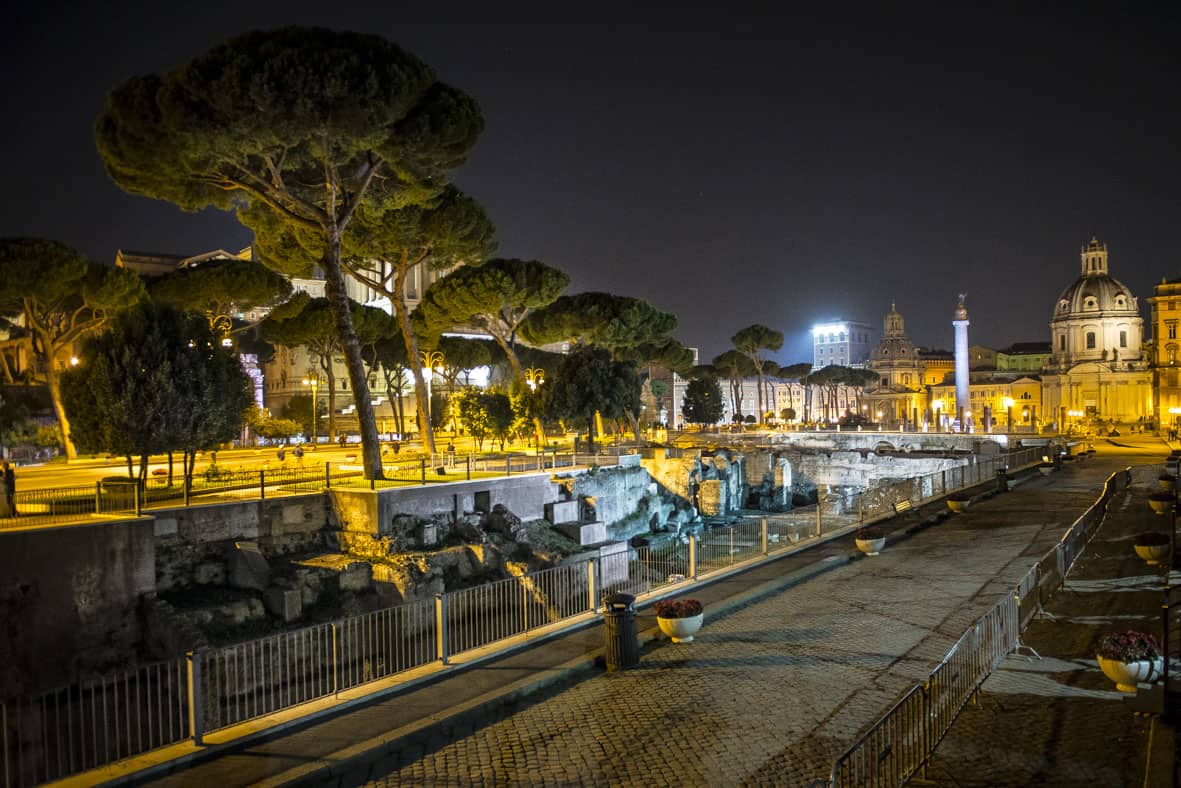
Anchored heavily by Rome and its history, Lazio is more than just the capital. Rome, while plagued with infrastructure problems, is arguably the most romantic and beautiful city on earth. But Lazio also has lovely beaches and a blossoming wine industry that is often forgotten in the wake of 2,000-year-old monuments everywhere.
Biggest city: Rome (pop. 2.9 million). One of the world’s iconic destinations, Rome was the center of mankind’s most powerful civilization, the remains of which are well preserved. Quiet piazzas and pedestrian alleys void of traffic give Rome the air of a big city with a small town right across the street.
Best city: Sperlonga (pop. 3,500). Rome is too obvious. Plus, it’s getting hot here. Time to hit the beach. No Lazio beach town has a better beach than Sperlonga. Located in Lazio’s southern end where the sand is fine and the sea is blue, it has been around forever. Emperor Tiberius (14-37 A.D.) had a villa there.
Best site: Colosseum. How can the Washington Redskins look for a new football stadium after only 26 years when the Romans used the Colosseum for 500? It’s because the Colosseum was better built than FedExField. Careful refurbishing has made the Colosseum the greatest, as well as the most haunting, symbol of Ancient Rome.
Most famous food: Pasta carbonara. It became famous after World War II when Allied soldiers ate it after liberating Rome and raved about it back home. Rome restaurants wage a fierce battle as to which one has the best carbonara, made with Pecorino Romano, guanciale (pig’s cheek), eggs and pepper.
Most famous wine: Frascati. This light, white wine produced in the town 18 miles (30 kilometers) southeast of Rome, is the wine of choice for summer picnics.
Most famous citizen: Julius Caesar (100-44 B.C.) Wildly popular dictator who spread the Roman Republic’s footprint from what is now France to Turkey. Jealous senators repaid him by stabbing him 23 times. Still, afterward he was nominated as god and a temple was built in his honor in the Roman Forum at the site of his cremation.
Liguria (pop. 1.5 million)
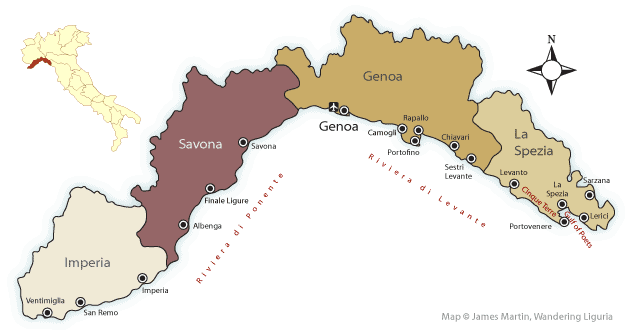

Wrapped around the northwest corner of Italy, Liguria is called the Italian Riviera. The bluest of blue Ligurian Sea is lined with charming harbors, port towns and villages hanging on cliffs. Cinque Terre gets the most attention and five towns get so flooded with tourists in summer it’s surprising it hasn’t fallen into the sea. But Liguria has other treasures as well. Just get off the, literally, beaten path that is Cinque Terre.
Biggest town: Genoa (pop. 585,000). Italy’s biggest seaport has been shuffling ships off to sea since the 12th century when the republic ruled much of the Mediterranean. Its aquarium is one of the best in Europe and sits on a port that replaced its bawdy trappings with museums and restaurants.
Best town: Santa Margherita Ligure (pop. 8,500). Unless you like canoodling with dozens of tourists in Yankee caps, don’t stay in Cinque Terre. Go 50 miles up the coast (85 kilometers) to this quaint town with a beautiful harbor, home to multi-million dollar yachts. Eighteenth century lanterns illuminate palm trees that circle the harbor, perfect for a late stroll after a fresh seafood dinner.
Best site: Vernazza harbor. Avoid it at all costs in the summer. Liguria’s idyllic photo op will be spoiled by mass humanity. But the quaint circular harbor surrounded by pastel-colored buildings is an easy get from the hiking trails above the town. One can swim inside the harbor and out.
Most famous food: Pesto. Like pine nuts? Of course, you do. It’s why pesto is Italy’s famous spread. Originated in Genoa in the 16th century, it’s made of pine nuts, crushed garlic and basil and blended with parmesan cheese and olive oil. In Italy it’s on everything from bruschetta to pasta.
Most famous wine: Vermentino. It’s a light, dry wine from white grapes grown on vines close to the sea.
Most famous citizen: Christopher Columbus (Genoa, 1451-1506). Made four crossings of the Atlantic on Spanish-backed expeditions and first landed in the Caribbean island of Hispaniola (Today Haiti and Dominican Republic) in 1492. He launched European exploration and colonization in the New World. I’m assuming he didn’t write, “Opened door to slavery in Western Hemisphere” on his resume.
Lombardy (pop. 10 million)
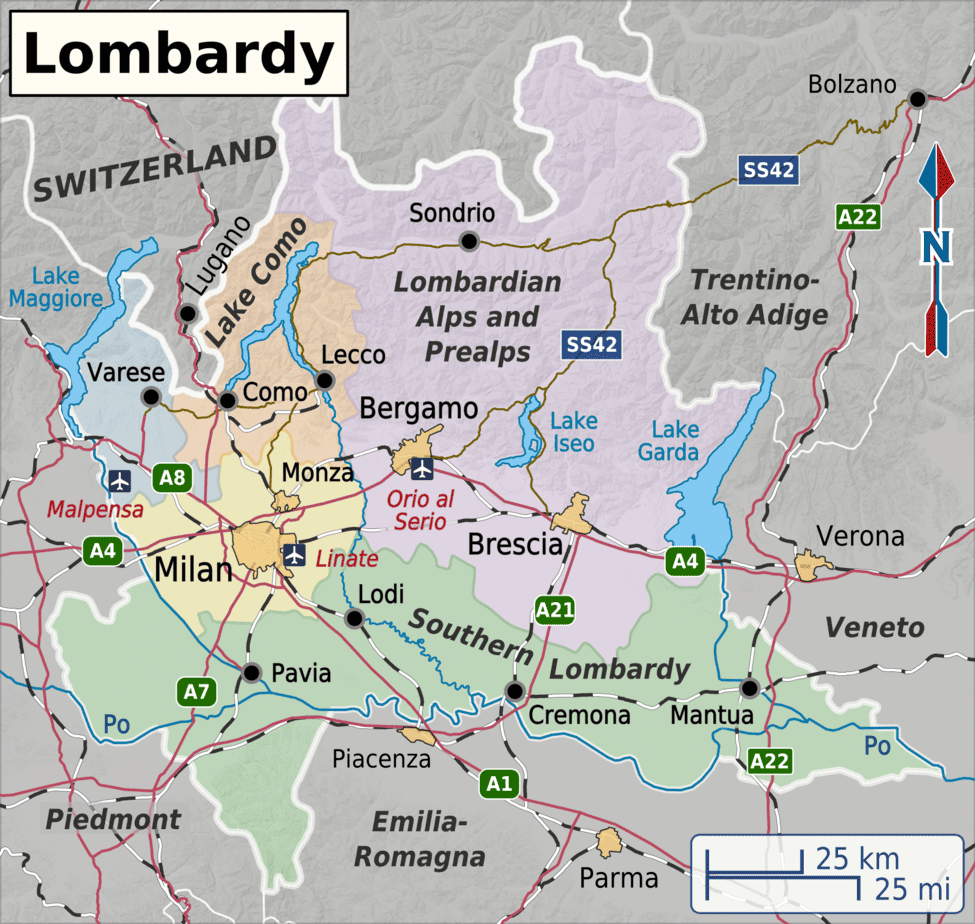
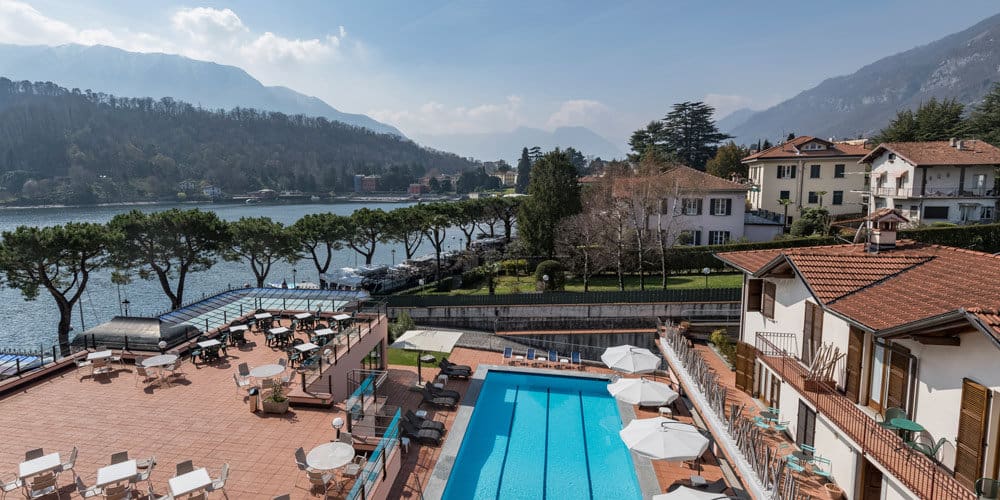
Lombardy counters its button-down image in Milan with the laid-back vibe from some of Italy’s prettiest lakes. Lake Como. Lake Garda. Lake Maggiore. Nestled up near the Alps, they are great escapes from the summer heat. Las Vegas named one of its poshest hotels the Belaggio for a reason.
Biggest city: Milan (pop. 1.3 million). One of the world’s leading fashion capitals, it has less charm than other Italian cities. After serving as a pinata during World War II, Milan was rebuilt into what today feels like a Northern European city with a pace to match. But it also has some of the country’s most iconic sites and its soccer teams are pretty good.
Best city: Como (pop. 490,000). It’s located on the southern tip of the left leg of Lake Como, which resembles an armless exotic dancer. The city has a beautiful piazza next to the water and a cobblestone historical center. This is where you get boats that take you up and down Italy’s most famous lake.
Best site: Duomo. Milan’s landmark church dating back to the 14th century looks like a pink birthday cake with thousands of candles. Those are 135 spires paired with 3,000 statues. Napoleon wanted to finance its completion in 1805 in time for his coronation as the new king of Italy. Allied bombers managed to only damage part of it.
Most famous food: Ossobuco. Lombardy’s signature dish has been around since the 18th century. It’s veal shank braised with vegetables, white wine and broth. It’s good in the winter, barely tolerable in the summer.
Most famous wine: Franciacorta. A sparkling red wine near Brescia that has had the coveted DOCG status since 1995.
Most famous citizen: Caravaggio (Milan, 1571-1610). Italy’s most famous Baroque painter and on its Mount Rushmore of artists, Caravaggio was the art world’s master of shadow and light. He also was a rebel, clashing with the Catholic Church for which he worked when he wasn’t brawling and whoring. Thus, he’s my favorite artist.
Marche (pop. 1.5 million)
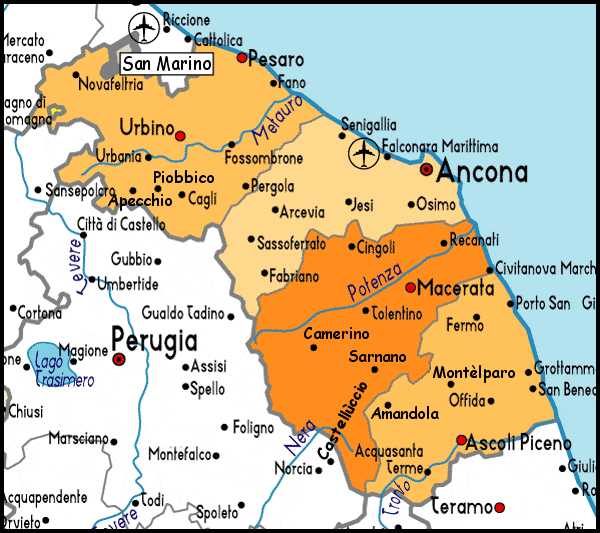

Le Marche, as it’s called in Italy, is Tuscany light. It has everything its neighbor has – vineyards, beaches, medieval hill towns, art – but at cheaper prices and a fraction of the tourists. It’s bordered by the Adriatic Sea and the Apennine mountains for the best of both worlds. Go to Parco Nazionale dei Monti Sibillini for some superb hiking.
Biggest city: Ancona (pop. 100,000). It’s a gritty port town that is a place from which to go and leave. The Greeks founded it in 387 B.C. and it has many remnants of its history from archaeological artifacts to Renaissance palaces.
Best city: Urbino (pop. 15,000). Located high on a hill, this UNESCO Heritage Site is a famous university town. But come for the spectacular views of the Marche countryside and a historical center that has changed little since the 15th century, including Raphael’s house.
Best site: Palazzo Ducale. Urbino’s famous 15th century palace houses one of Italy’s largest collections of Renaissance art, including works from its favorite son, Raphael. Marvel at the massive Salone del Trono, a 35-meter long, 17-meter high room that was the banquet room for the duke who built the palace, Federico da Montefeltro.
Most famous food: Olive all’ascolana. It’s an olive stuffed with veal then breaded then fried. It’s the star of the annual Fritto Misto festival in Ascoli Piceno and served as an antipasto from Sicily to the Alps.
Most famous wine: Verdicchio. Some wine journalists say it’s the best white wine in Italy and one of the best values in the world, like the region itself.
Most famous citizen: Raphael (Urbino, 1483-1520). The architect and painter formed Italy’s Renaissance triad with Leonardo Da Vinci and Michaelangelo and his works are all over the world, particularly the Vatican Museums. He had a fierce rivalry with Michaelangelo with whom he once shared working quarters in Rome, however awkwardly.


June 20, 2023 @ 11:27 am
Wow! I loved this tour and can’t wait for the second installment. I have to brag that after 37 years married to an Italian, I have seen much of what you point out but not all. You are spot on!
Thank you for such an enjoyable read. From Como with thanks!
June 20, 2023 @ 1:58 pm
Now I want to read the book..Have you written it yet? This is wonderful reading and I like the snide comments although ‘loathe’ for Joyce is too strong in my opinion.
June 20, 2023 @ 5:11 pm
Thanks for this wonderfully entertaining summary. It’s concise, funny and full of telling details, all hallmarks of your style. Keep ’em coming!
June 21, 2023 @ 8:11 am
Thanks, Virginia. I’ve written six chapters. It’s a long way from completion.
June 21, 2023 @ 5:16 pm
Thanks, John, for your informative review of 10 of the regions. I’m looking forward to your next “tour.” I have been to all of the regions except Valle d’Aosta and Sardenia. Twice a year, I take small groups to Italy and always stress to my travelers that each region is like a different country. Your summary will now convince them that it is true!
June 22, 2023 @ 10:56 am
So you “like” the bullying about the terrorist bombardment of Milan for example? It seems crime apology
June 22, 2023 @ 11:46 am
John, you gave a lot of good advice, but I think calling Ancona “a gritty port town” is completely absurd. Please check out anconatourism.it
June 25, 2023 @ 12:52 pm
Thank you for your wonderful and humorous journey through Italy, I live in Trentino another beautiful region in the Alps, Umbria and of course Puglia are also highly recommended regions.
June 27, 2023 @ 4:03 pm
Thanks, Clelia. I’m dreaming of the Dolomites right now. It’s hot in Rome today.
July 1, 2023 @ 5:07 pm
Ehi John!
Great piece.
I think you post-dated the Basilica in Aquileia of an entire millennium, since it was founded in 4th cent.
As an Italian, I am quite ashamed that Calabria still misses from my list..